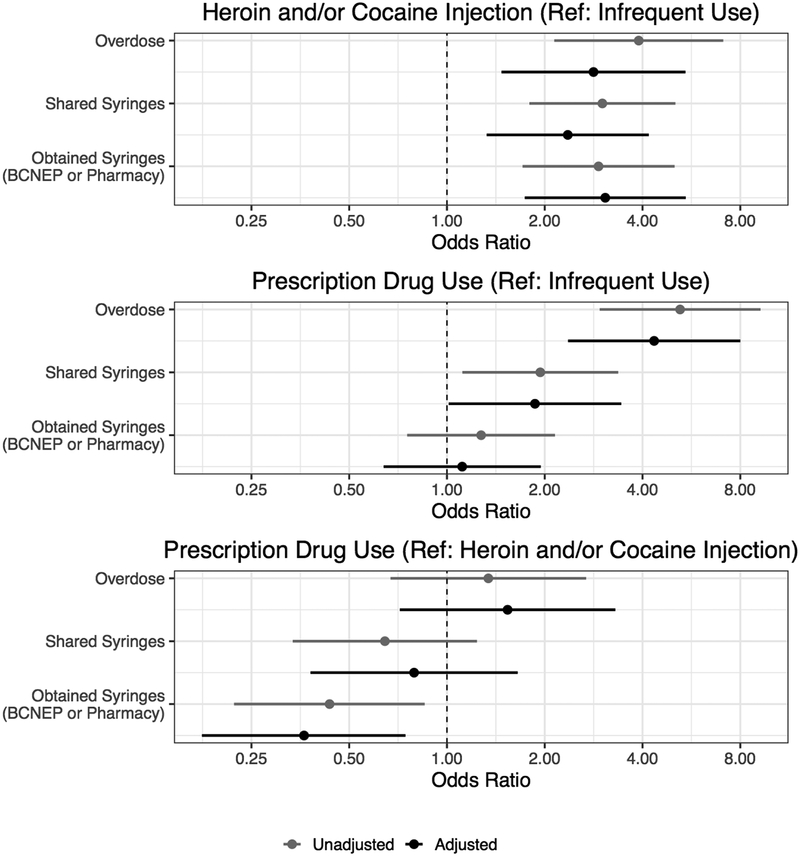Figure 2.
Associations of Drug Use Class with Overdose, Syringe Sharing, and Obtaining Syringes among 671 Current and Former People who Inject Drugs in Baltimore, MD, 2017
We examined how membership in the heroin and/or cocaine injection (top) and prescription drug use classes (middle) was associated with three outcomes relative to infrequent use: overdose, syringe sharing (among 431 participants who injected drugs in the past 6 months), and obtaining syringes from the Baltimore City Needle Exchange Program (BCNEP) or a pharmacy (among 431 participants who injected drugs in the past 6 months) using logistic regression. We also compared prescription drug use with heroin and/or cocaine injection (bottom). Adjusted results present the association of class with outcomes after adjustment for age, African American race, gender, homelessness, HIV (status and viral load detectability), depression, and alcohol use. Participants in the prescription drug use class had elevated odds of overdose and sharing syringes, but not of obtaining syringes compared to participants in the infrequent use class. Participants in the heroin and/or cocaine injection classes had higher odds of overdose, sharing syringes, and obtaining syringes relative to participants in the infrequent use class. Participants in the prescription drug use class were less likely to obtain syringes relative to participants in the heroin and/or cocaine injection class.

